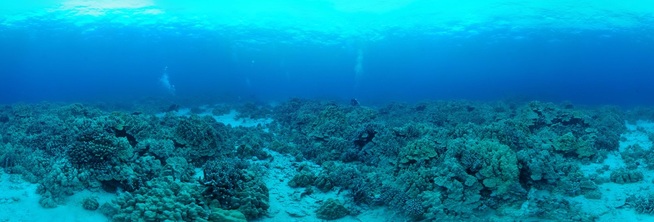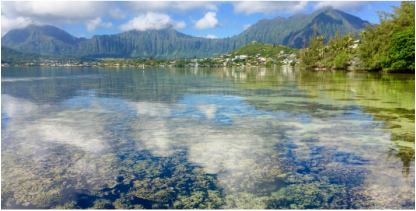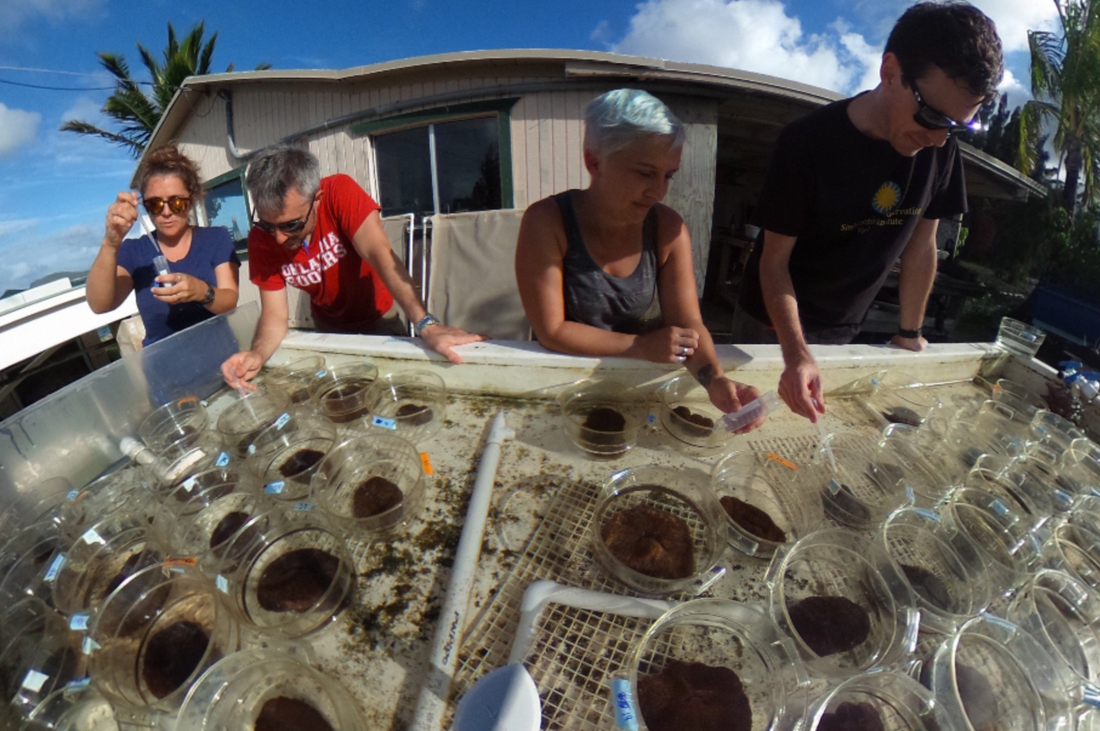Educational Resources, Videos, and Learning Tools
Exploring Windward and Leeward Coral Reefs
Digitally SCUBA reefs using an immersive 360-degree panoramic tour, interactive video transects, and high resolution photography
Digitally SCUBA reefs using an immersive 360-degree panoramic tour, interactive video transects, and high resolution photography
Learn about how reefs are affected by their environment on land and at sea!
|
An Introduction to Coral Reefs
New to coral reefs? No problem! Start your learning experience with an introduction to coral reefs. Click to learn about the factors that dictate "windward and leeward" and why this geographic distinction is important for coral reef communities. Click the image to learn more! |
Panoramic Coral Reef Resources
Experience the beauty of coral reefs as an underwater digital explorer *click on images to be taken to external websites hosting panoramic media*
Experience the beauty of coral reefs as an underwater digital explorer *click on images to be taken to external websites hosting panoramic media*
360 Panoramic: Studying Coral Reproduction at the Hawai'i Institute of Marine Biology
|
This panoramic shows researchers at the Hawai'i Institute of Marine Biology collecting gametes from the broadcasting spawning reef coral Fungia scutaria. These corals are unique in that they are 'solitary' corals. While most reef corals are colonial (one organism consisting of many thousands of polyps), Fungia spp. (the mushroom corals) are actually just ONE big polyp, similar in a way to an anemone but with a calcium carbonate skeleton. Fungia spp. corals are gonochornic (being either male or female). Interestingly, small F. scutaria are often males and larger individuals are often females. These corals appear to actually be start off as males and later in life change to a female sex , suggesting F. scutaria gonochorism is more correctly described as protandrous ("male first") hermaphrodism. During spawning, eggs or sperm are released into the water column and fertilization occurs externally in the seawater. Eventually these offspring will find a home on the reef and "settle" on the reef substrate. As juveniles, the mushroom corals are attached to the reef, but adults are not cemented to the substrate and are instead "sitting" in place and easily moved. Finally, Fungia spp. corals can also divide by budding, where the single polyp divides to produce two polyps (budding or fission) and the new clonal half buds off to become a new coral. WILD! |
Underwater "Google Street View": In Situ Coral Nurseries and the Coral Reefs of Okinawa, Japan
Google teamed up with the Catlin Seaview Survey and the Ocean Conservancy to generate some amazing 360 panoramics of the coral reefs of Japan--great for exploring! Using a mouse or track pad, you can zoom in and out from a stationary point of view, or you can click and drag to get views in 360 degrees. You can also click off in different directions (follow the "street view arrows") and move to different positions on the reef. The coral transplantation nursery at Yamada Point, Okinawa, is very special--it is over 3 hectares in size, and is the largest of its kind in the world. Happy exploring!
Google teamed up with the Catlin Seaview Survey and the Ocean Conservancy to generate some amazing 360 panoramics of the coral reefs of Japan--great for exploring! Using a mouse or track pad, you can zoom in and out from a stationary point of view, or you can click and drag to get views in 360 degrees. You can also click off in different directions (follow the "street view arrows") and move to different positions on the reef. The coral transplantation nursery at Yamada Point, Okinawa, is very special--it is over 3 hectares in size, and is the largest of its kind in the world. Happy exploring!
Educational Videos
Watch videos on the physical and biological processes in the tropical and temperate marine habitats
Watch videos on the physical and biological processes in the tropical and temperate marine habitats
|
STEM Outreach: Careers in Science (K-5)
Learn About the Living Sea as a Marine Biologist! Marine biology is a fascinating field. However, all marine biologists are not the same. At the most basic level, marine biologists study organisms ranging from microscopic plankton and microbes to whales. As a coral biologist I study the unique animals known as reef corals. Reef corals are very important--economically, ecologically, and culturally. These organisms are related to sea jellies, except they produce a hard, rocky skeleton that builds the architecture of coral reefs that many reef organisms call home. |
|
In this video I discuss a career in marine biology through the lens of my research on reef corals. I highlight some ways scientists study corals and what skills are important for aspiring scientists. The video was designed for an elementary school STEM program, but it is applicable for all age groups and interests in marine biology.
|
The Marine Light Environment
as Demonstrated on a Coral Reef: Hilo, Hawai'i Sunlight is the energy reactor that powers our planet. The visible light produced from the sun--ie., the light we can see with our eyes--ranges from 400-700nm and comprises the photosynthetic light spectrum. Water is more dense than air and it filters out shorter wavelengths of light, such as red, and alters the abundance and spectral composition (or color) of light penetrating into the ocean. Just like plants on land, marine algae rely on light for photosynthesis. Marine photoautotrophs are adapted to use this "blue-shifted" light by using specialized photosynthetic pigments. Watch the video to learn more! |
|
|
Tidepools and the Intertidal
in Tropical and Temperate Ecosystems The intertidal is a zone of coastal habitat found between the high and low tide mark in what is referred to as the littoral zone. Organisms in the intertidal are subject to significant environmental stress and may experience extended periods of both seawater inundation and aerial exposure. The capacity for intertidal organisms to withstand abiotic stress (i.e., high temperatures, high light levels, large swings in oxygen/CO2 concentrations) and "win" in biological interactions (i.e., predation, competition) plays a significant role in the distribution of organisms in this unique habitat. Watch the video to learn more! |
|





